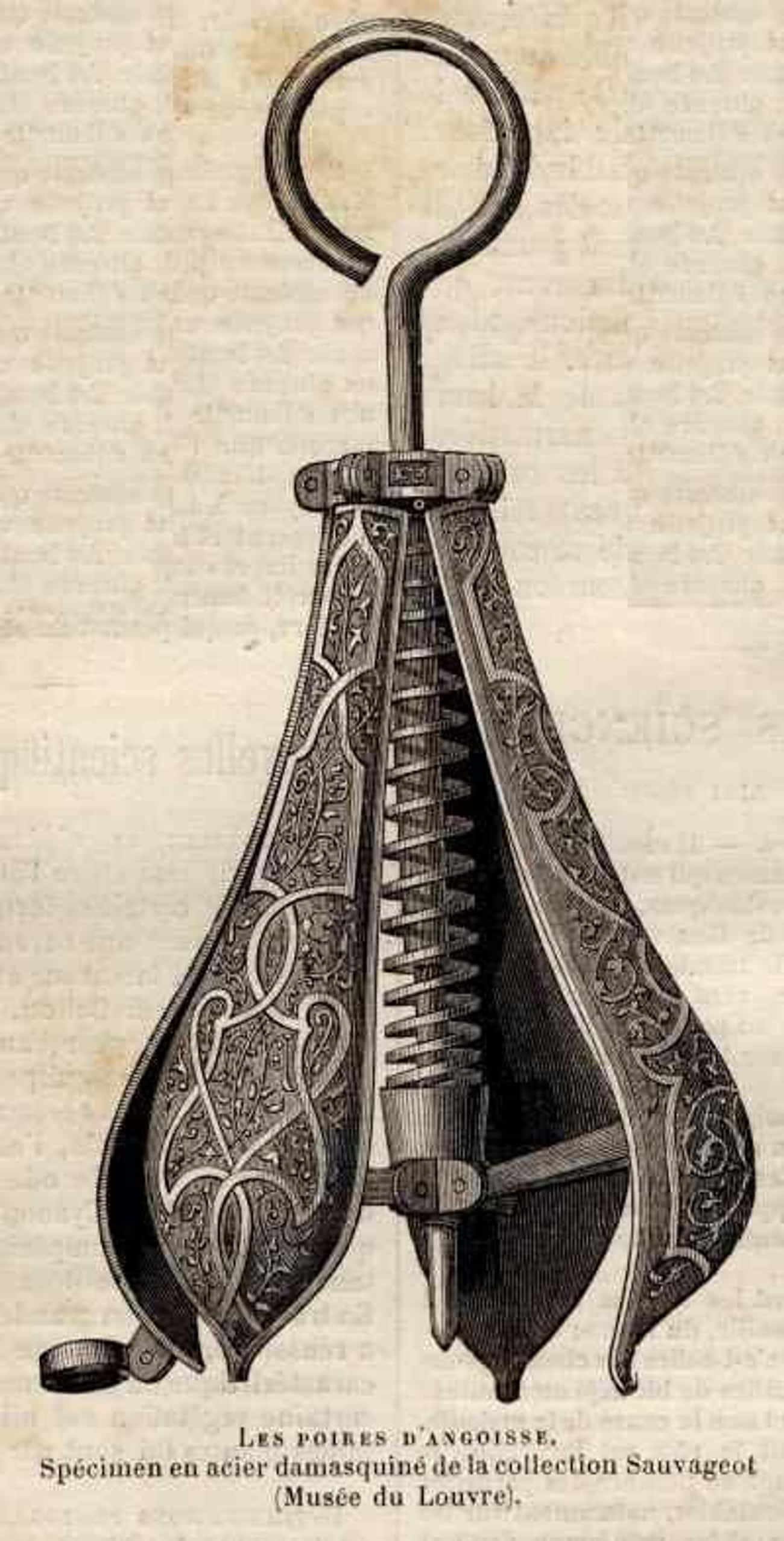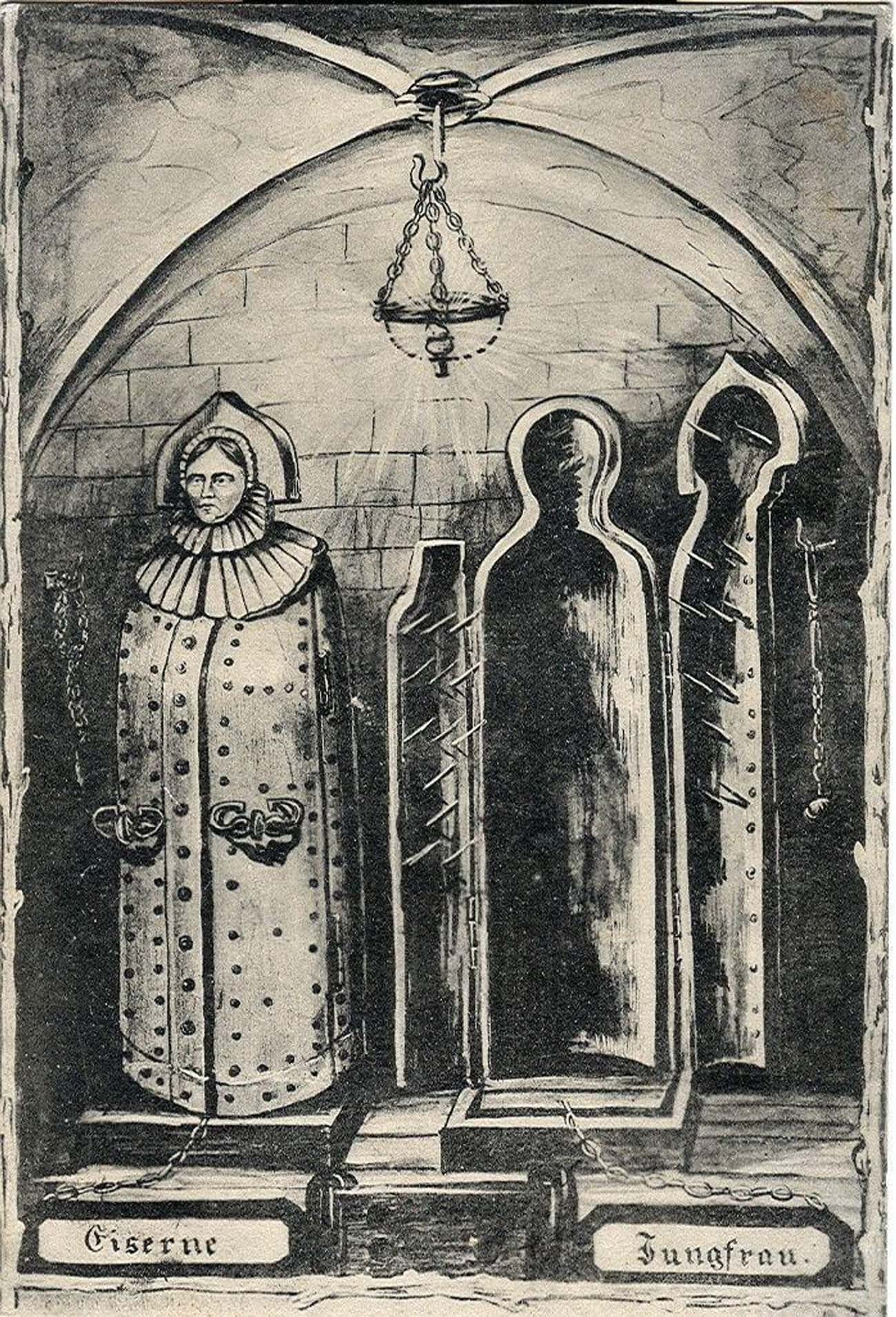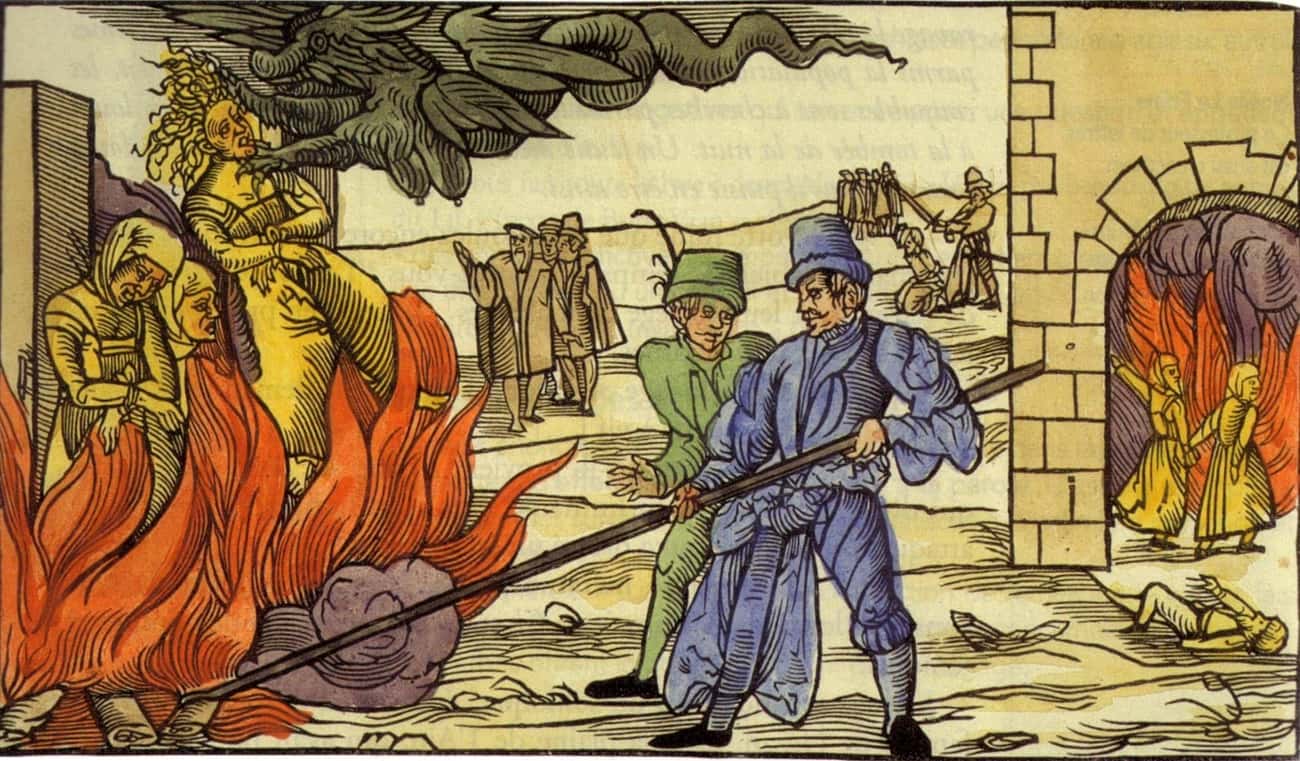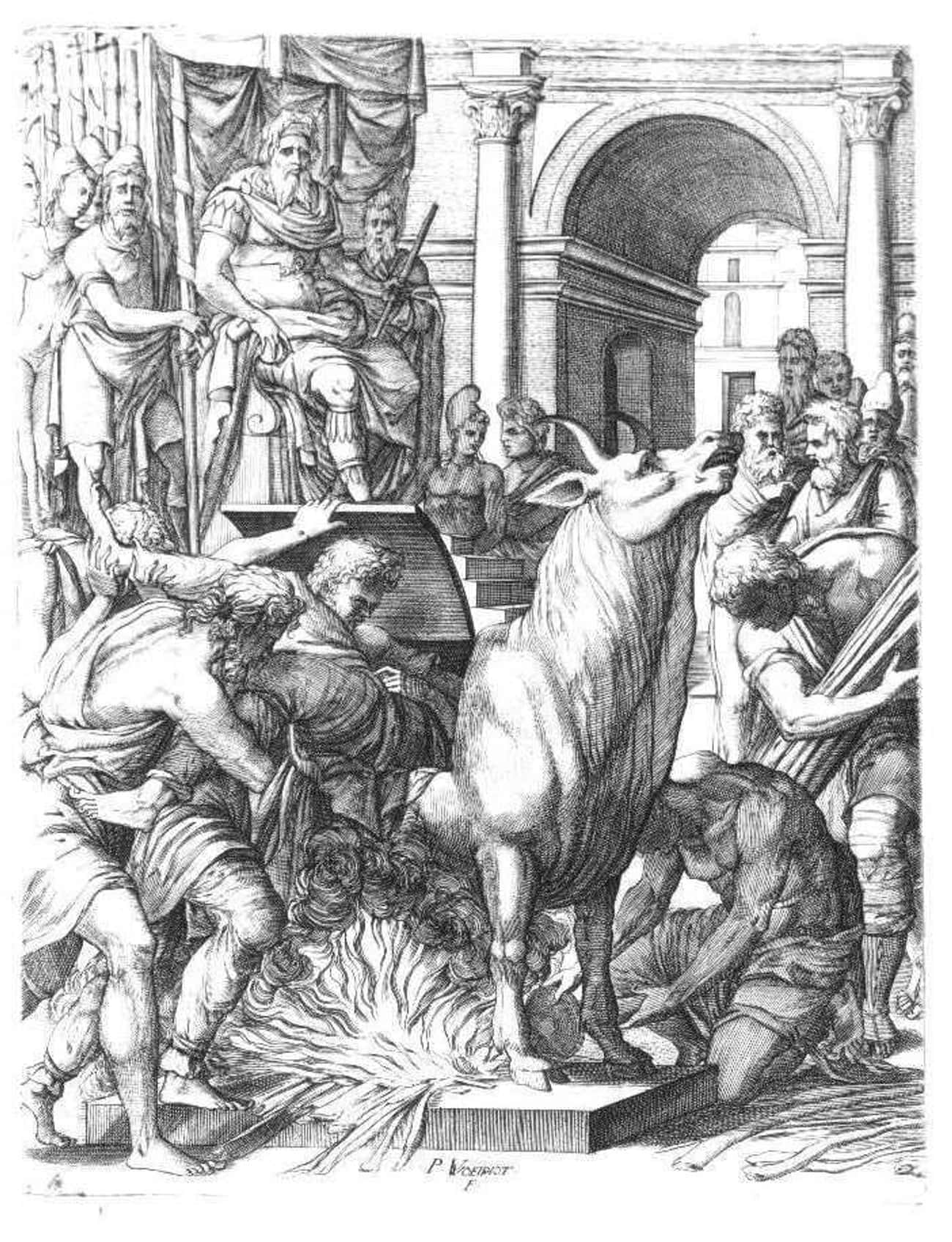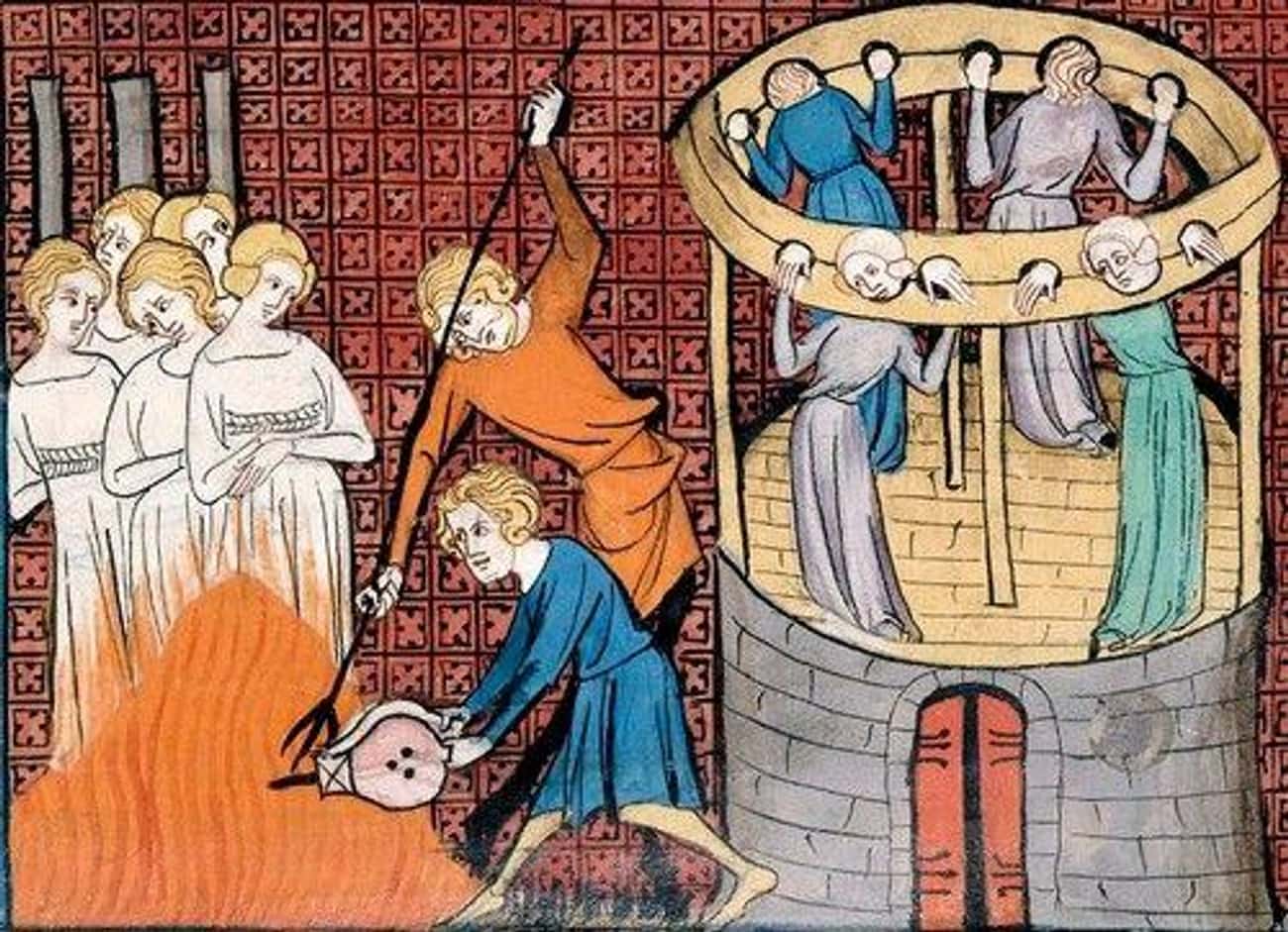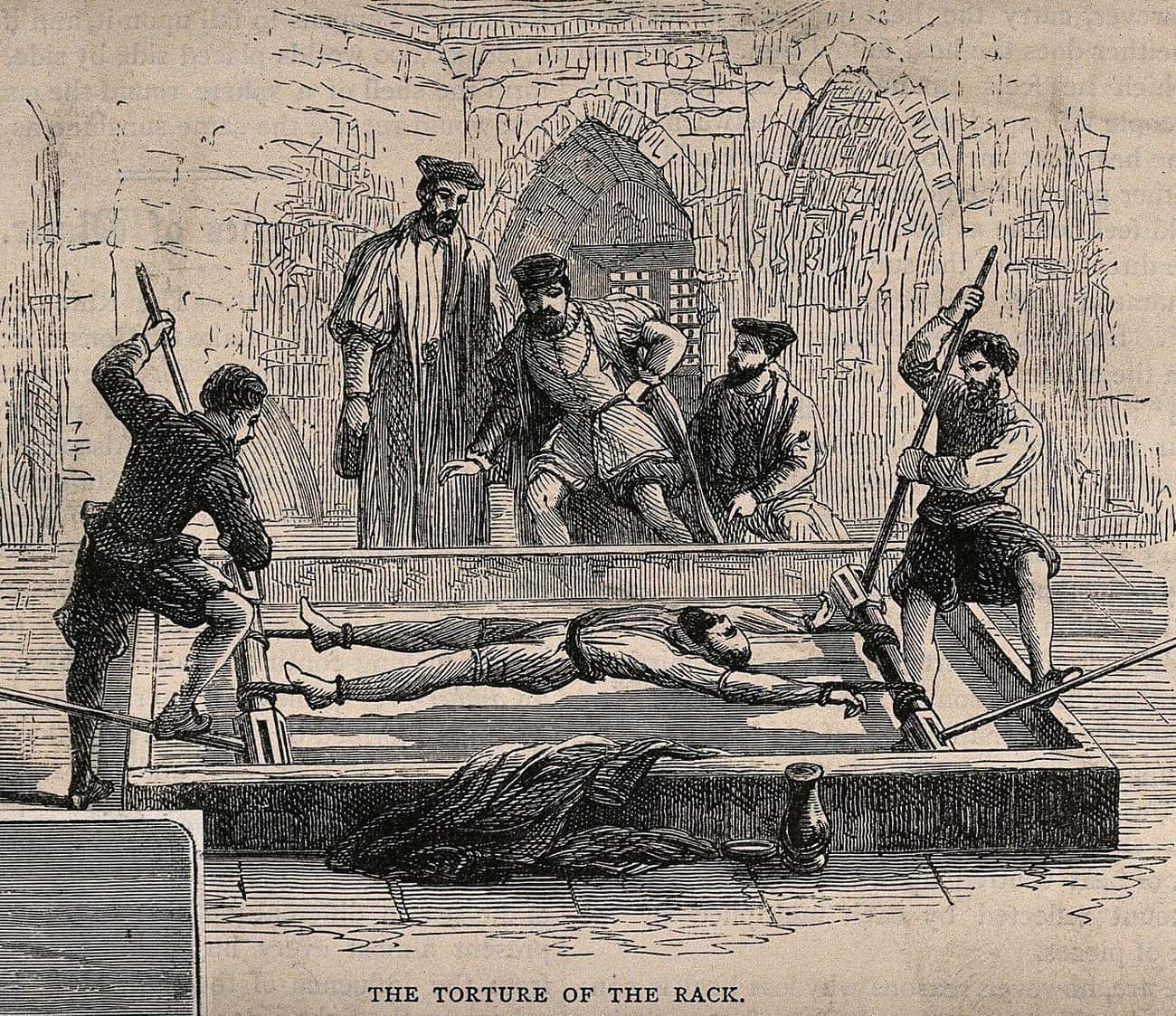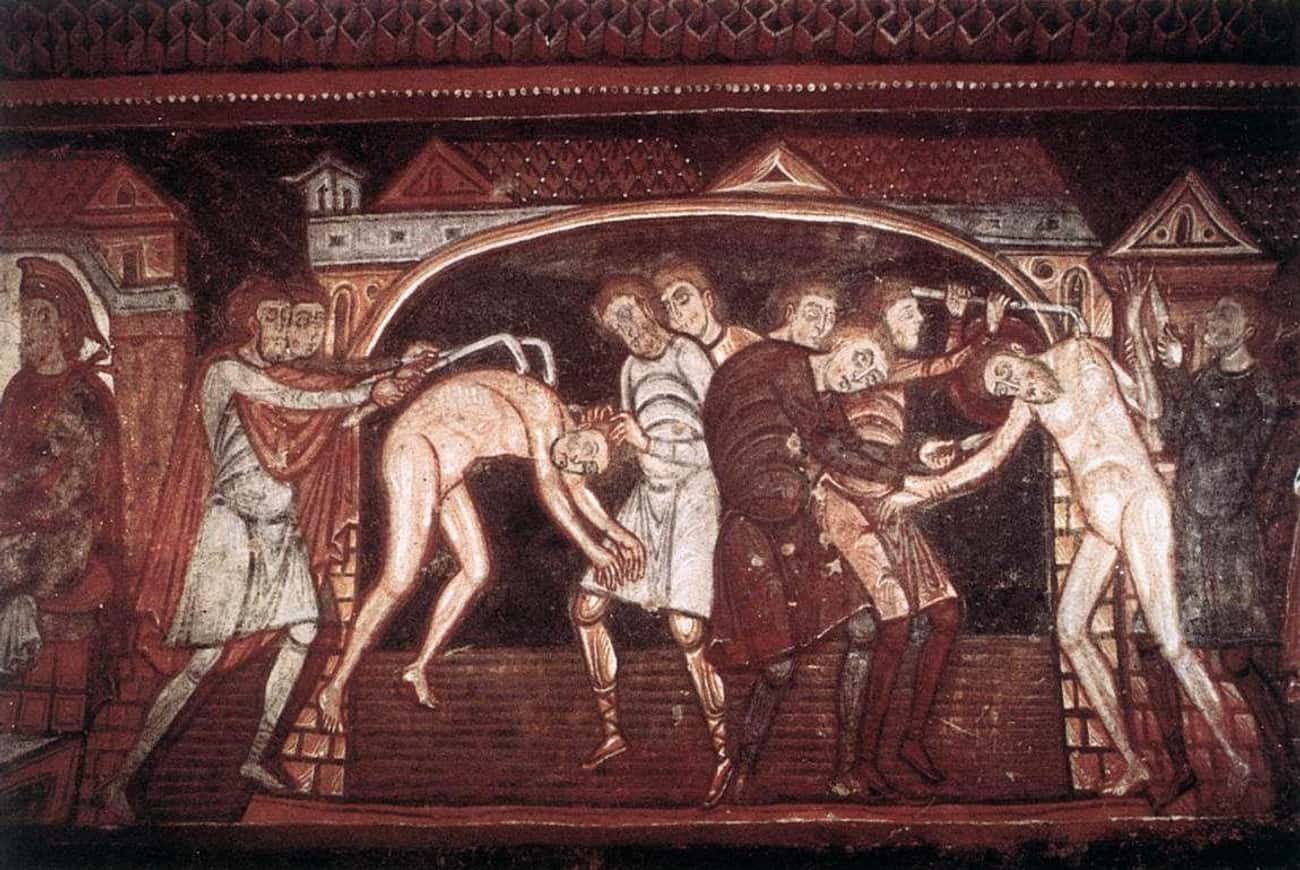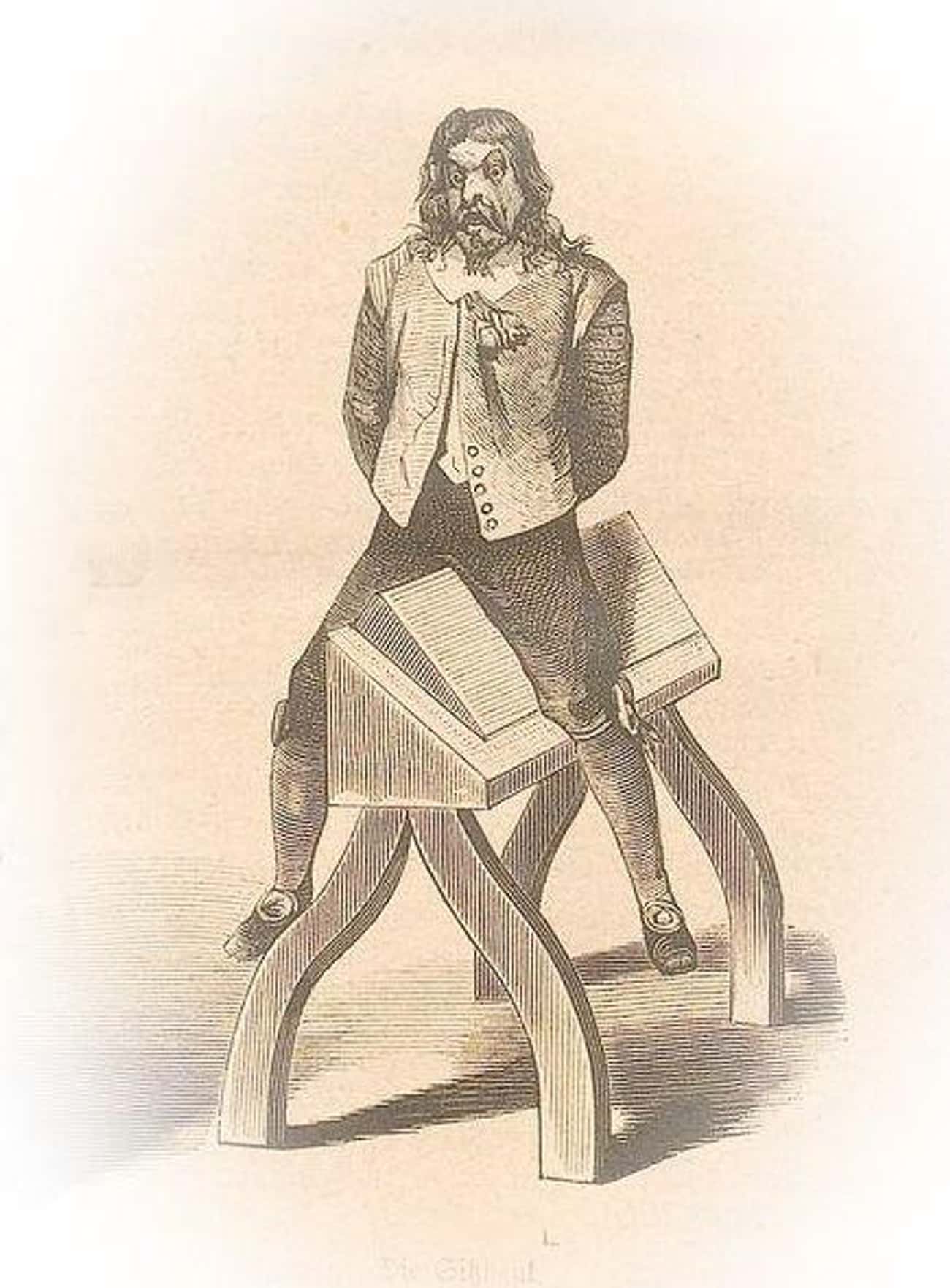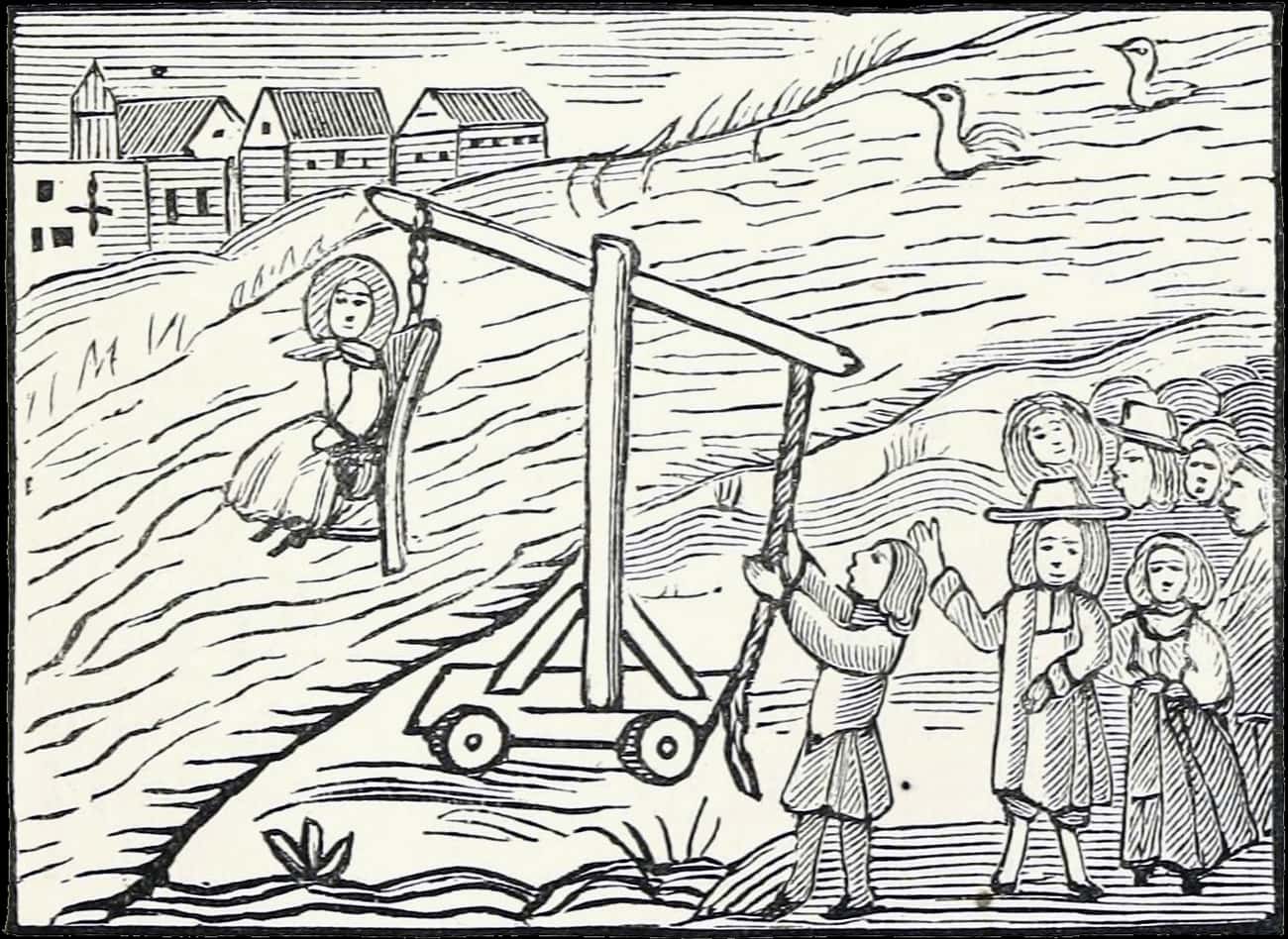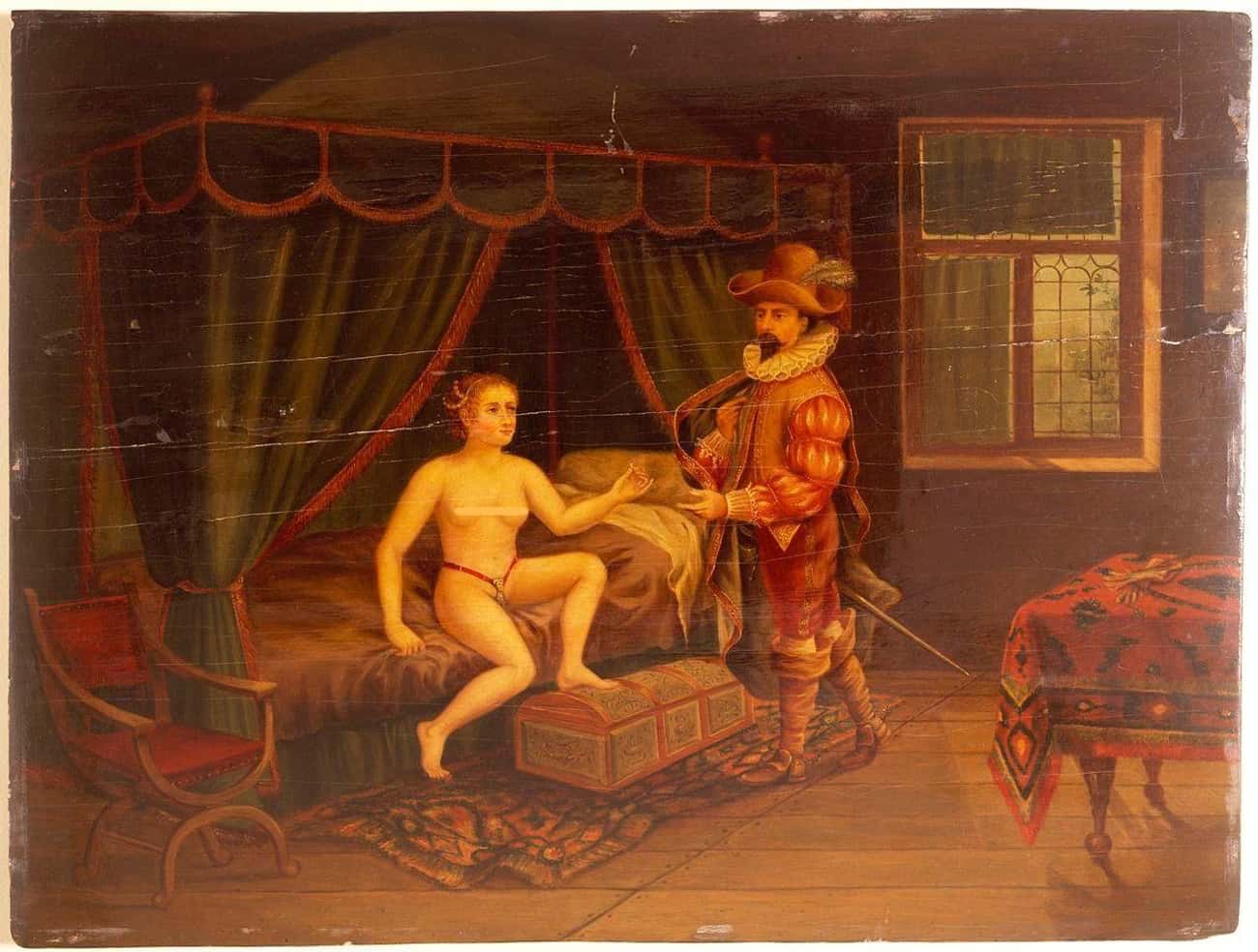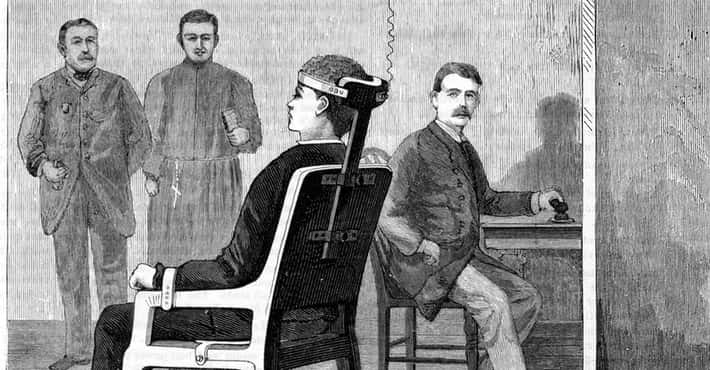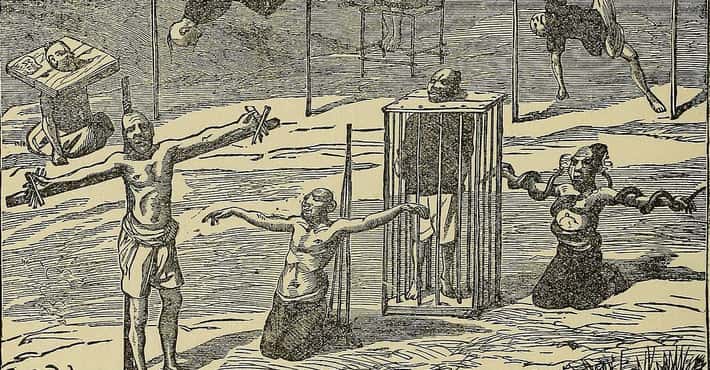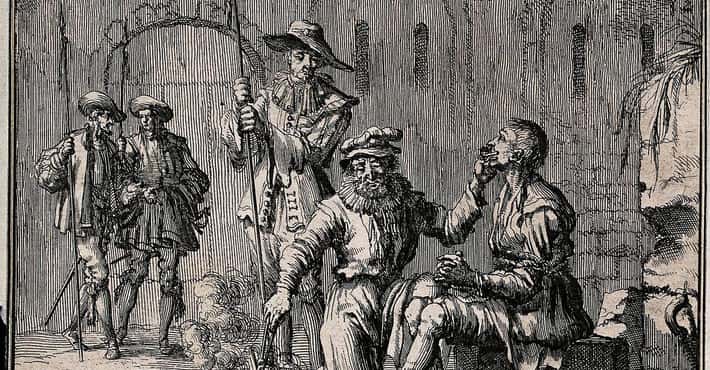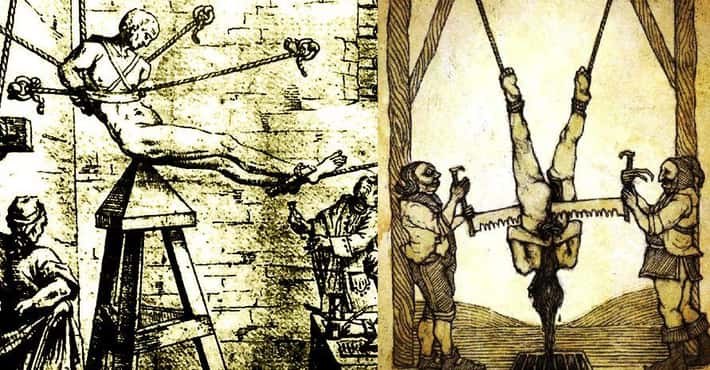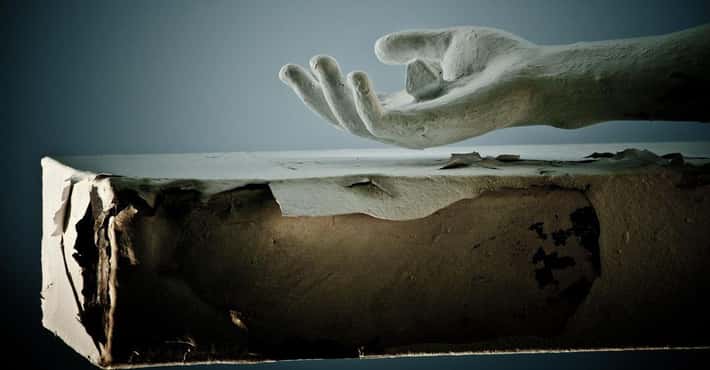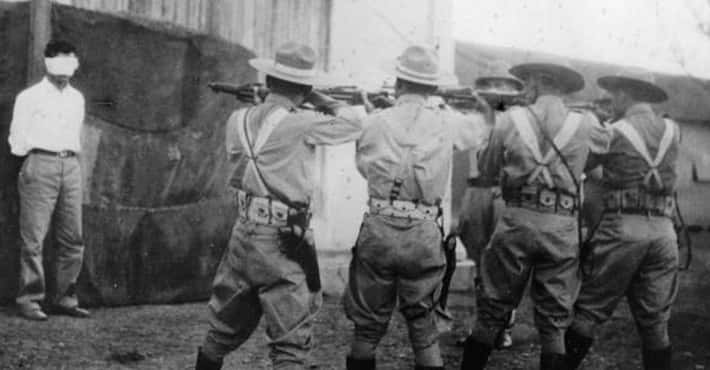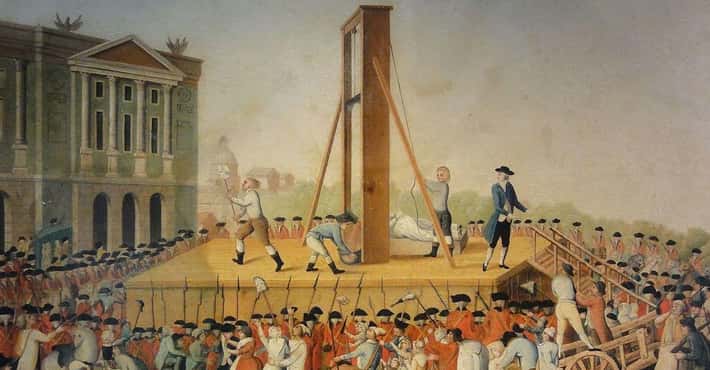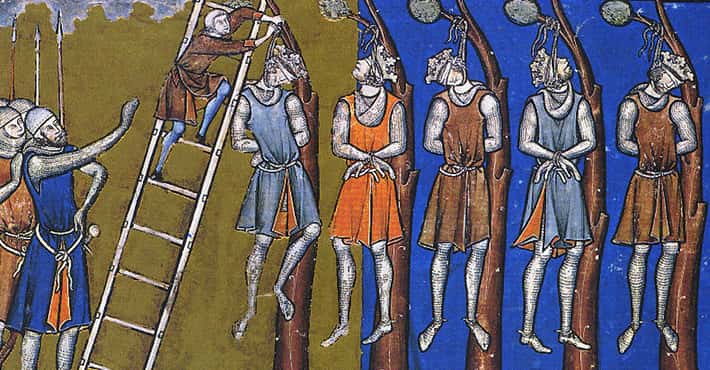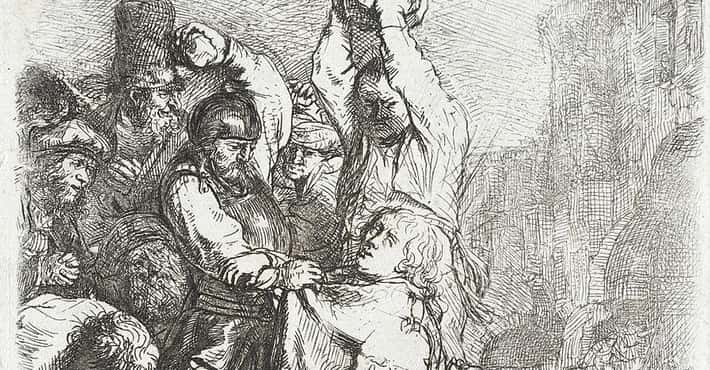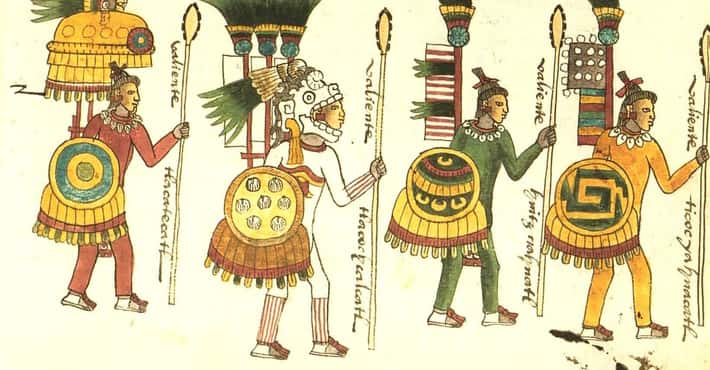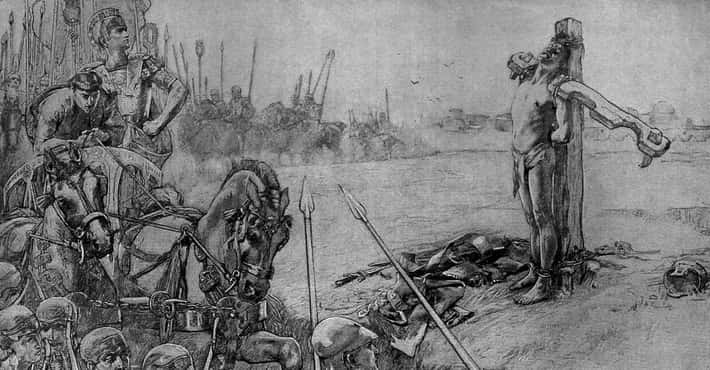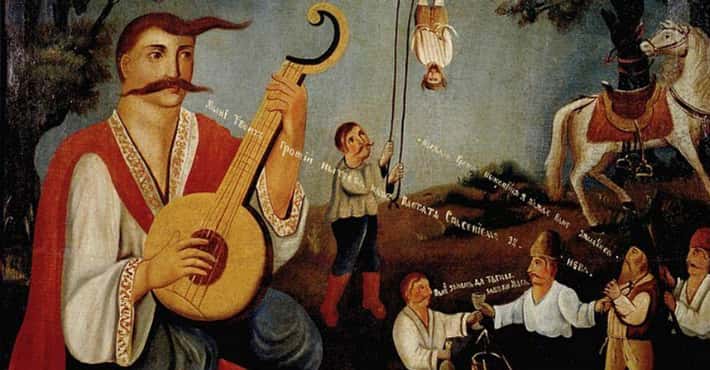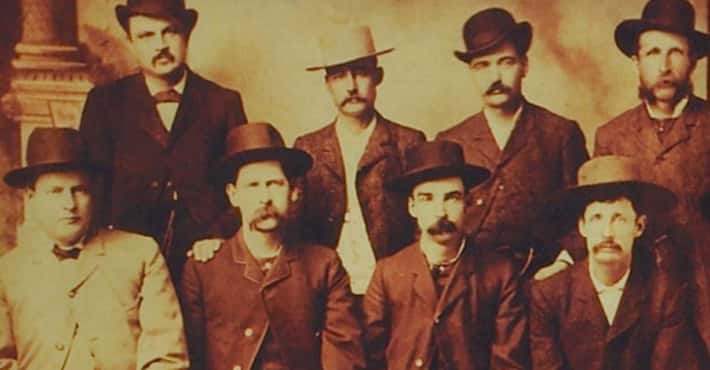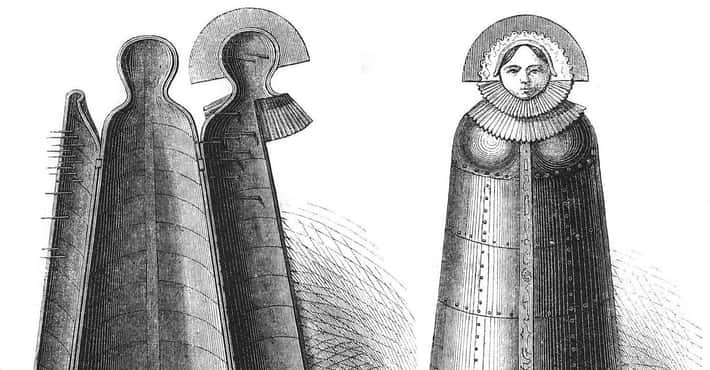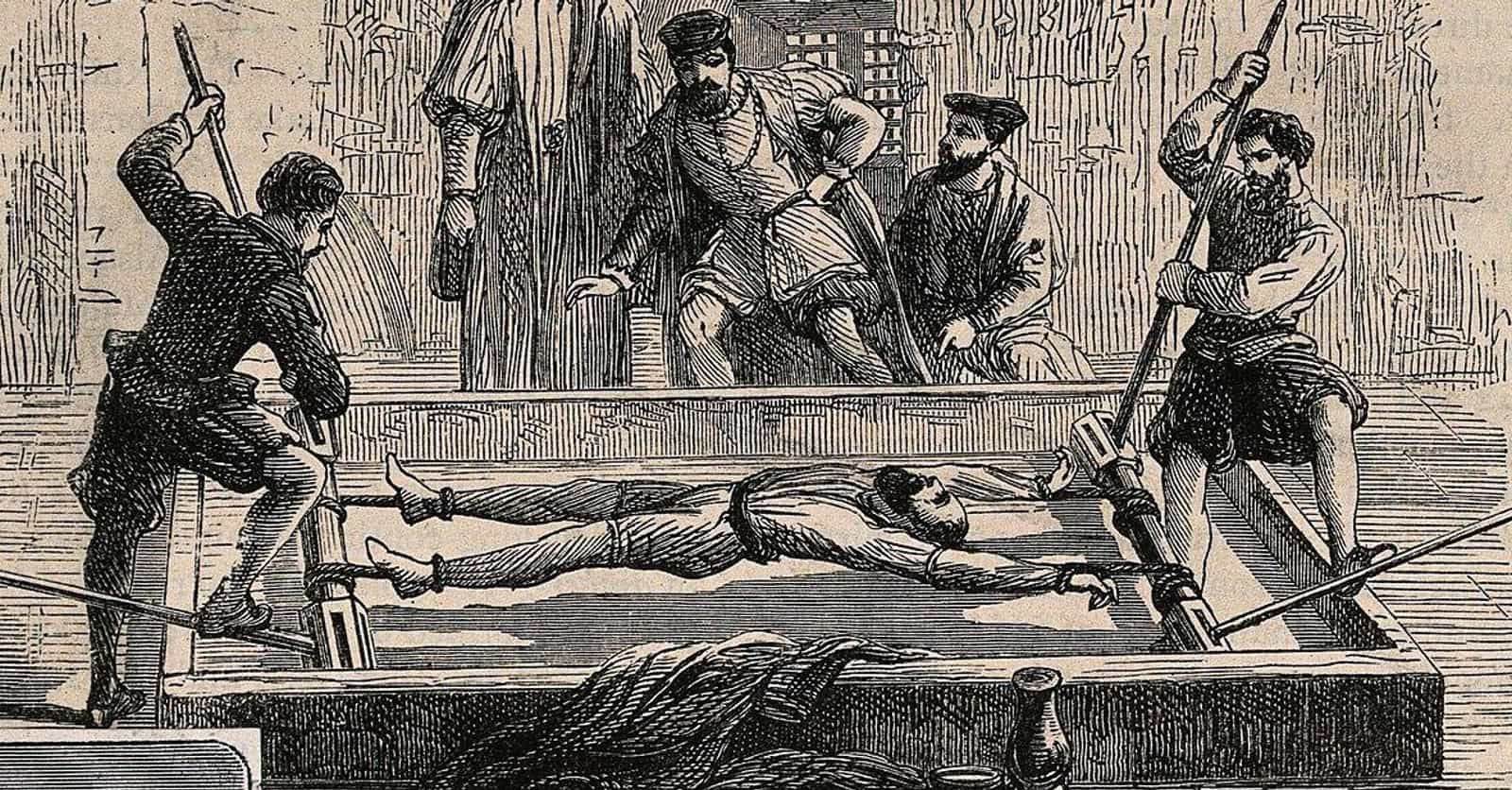
Things People Believe About Historical Torture That Are Just Not True
MYTH: Sexual Deviants Were Punished With The Pear Of Anguish
Photo: La Science Illustrée / Wikimedia Commons / Public DomainThe Myth: After being inserted into one of a victim's various orifices, the pear of anguish was screwed open until the skin was stretched beyond endurance.
Where You've Seen It: Torture museums.
The Reality: The first mention of the pear of anguish comes from the 19th century, with no evidence that the device was used for torture. A recent examination of devices in torture museums shows it was too weak to open inside a bodily orifice. On top of that, the latch device could never be opened while the pear was inside someone's body.
As for the objects themselves, historian Chris Bishop says they were possibly sock stretchers or glove wideners.
MYTH: Criminals Experienced A Slow, Piercing Punishment In The Iron Maiden
Photo: Wikimedia Commons / Public DomainThe Myth: Victims were forced into a dark chamber studded with spikes. When the doors closed, the spikes pierced their bodies.
Where You've Seen It: Movies, the internet, torture museums, you name it.
The Reality: The iron maiden was a phony invention from the 18th century. Writer Johann Philipp Siebenkees claimed that, centuries earlier, a Nuremberg criminal perished inside an Egyptian mummy case lined with spikes. By the 19th century, fake iron maidens were on display across Europe, particularly in torture museums.
Multiple sources repeated the false stories, turning the iron maiden into a legendary medieval torture device.
MYTH: The Catholic Church Brutally Tortured Witches
Photo: Wikimedia Commons / Public DomainThe Myth: The Catholic Church brutally tortured women to force them to confess to witchcraft.
Where You've Seen It: Across popular culture.
The Reality: Accused witches were indeed tortured across Europe, largely in the 16th and 17th centuries. However, the Catholic Church rarely tortured accused witches. During the 1609-11 Basque witch hunt overseen by the Inquisition, only two suspects out of thousands were tortured - and both received a reduced sentence of banishment rather than execution.
Secular authorities were much more likely to torture accused witches, especially to force victims to accuse others. This is what spurred the largest witch hunts. The Inquisition, by contrast, was comparatively less brutal to the accused.
MYTH: Medieval People Punished Criminals In The Brazen Bull
Photo: Pierre Woeiriot / Wikimedia Commons / Public DomainThe Myth: Medieval Europeans stuffed people into metal bulls, then lit fires underneath to roast them alive. Their anguished cries escaped the bull's hollow mouth.
Where You've Seen It: Movies, and stories about the martyrdom of Saint Eustace.
The Reality: The brazen bull was never used in medieval Europe. In fact, it may have never existed at all.
Reportedly created in the 6th century BCE by Sicilian tyrant Phalaris, no archaeologist has found physical evidence of a brazen bull. It's possible the story was invented just to make Phalaris look like a cruel ruler. As for Saint Eustace, reportedly martyred in a brazen bull, the Catholic Church says the stories are false.
MYTH: The Pillory Caused Excruciating Pain
Photo: Wikimedia Commons / Public DomainThe Myth: The pillory, also known as the stocks, locked up criminals in a contorted position and left them vulnerable to assault.
Where You've Seen It: Movies.
The Reality: The pillory really existed, but it was meant to shame criminals, not physically harm them. In medieval London, bakers who sold fake bread were sentenced to the pillory for several hours, where their fellow Londoners could sneer at them. But after their sentence, the bakers were released, suffering only from potentially sore muscles.
Female convicts sent to the pillory were often given a stool to sit on, again underscoring that the shame of public punishment was the point.
MYTH: Medieval Peoples Used The Rack As Their Main Form Of Torture
Photo: Wellcome Images / Wikimedia Commons / CC BY 4.0The Myth: Medieval Europeans frequently tormented criminals with the rack, which slowly stretched their bodies.
Where You've Seen It: Movies, the internet.
The Reality: The rack really did exist, but it was invented in the ancient period, not by medieval Europeans. The device was probably uncommon in the medieval era.
Historians have found just one reference to the existence of a rack during the Middle Ages: the Tower of London in 1447. If medieval England possessed just one rack, it likely wasn't the main form of torture during the era.
MYTH: Ancient Persians Subjected Their Worst Criminals To 'The Boats'
Photo: Unknown / Wikimedia Commons / Public DomainThe Myth: Ancient Persians laid victims between two boats, with their head, hands, and feet left free. They were then fed milk and honey until their excretions drew insects to feast on their bodies.
Where You've Seen It: Plutarch's writings.
The Reality: The tale of Persia's horrific torture method comes from Plutarch, who takes it from an earlier Greek historian, Ctesias of Cnidus. According to Livius, "Few ancient authors are as unreliable as Ctesias." Even Plutarch admitted that Ctesias's work contained "extravagant and incredible tales."
It's possible the Persians really did torment criminals with "the boats," also known as scaphism, but it's just as likely Ctesias made it up.
MYTH: Rat Torture Was Common Because People Had Access To Rats, Ceramic Pots, And Fire
The Myth: Torturers placed rats in a ceramic bowl against the belly of the victim, using fire or hot coals to force the rats to gnaw into the victim's body.
Where You've Seen It: Popular culture; Game of Thrones; 2 Fast 2 Furious.
The Reality: The main historical source for rat torture comes from a history of the Netherlands written in the 19th century by amateur historian John Lothrop Motley. Motley describes the torture of Nanning Koppezoon, who was allegedly gnawed upon by rats and then further tormented with "red-hot coals."
Koppezoon somehow survived this torture and several others, including dehydration and the dislocation of his joints. However, Motley's description of Koppezoon's extensive torture seems exaggerated. Although actual rat torture was used during the 20th century by dictators in Chile and Argentina, the method was used rarely, if at all, during the Middle Ages.
MYTH: Nobles Endured The Most Horrific Torture Methods
Photo: Daniel Meissner / Wikimedia Commons / Public DomainThe Myth: Noblemen were drawn and quartered, broken on the rack, and subjected to similarly horrific tortures.
Where You've Seen It: Movies.
The Reality: The justice system treated commoners and nobles very differently. While noblemen guilty of a serious offense like treason might face the chopping block, they were often spared from the most brutal forms of torture.
In fact, noblemen frequently escaped punishment altogether or simply paid a fine. According to historians Andrew Barrett and Christopher Harrison, a nobleman who took liberties with a serving maid paid no more than a 12 shilling fine.
MYTH: The Spanish Inquisition Used Cruel Instruments To Interrogate Heretics
Photo: Unknown / Wikimedia Commons / Public DomainThe Myth: The Spanish Inquisition used horrific devices like the Judas Cradle and the Spanish Donkey to torture heretics.
Where You've Seen It: Movies; popular culture.
The Reality: The idea that the Spanish Inquisition was particularly brutal first appeared in the 18th century. But inquisitors only went so far when interrogating suspected heretics. Inquisitors threatened to use torture against suspected heretics, but they employed it far less frequently than is often imagined. The Inquisition courts also adhered to relatively strict rules regarding criminal procedure, such as verifying confessions made under torture 24 hours after the fact.
Around 25% of accused heretics were tortured by the Spanish Inquisition. Inquisitors didn't rely on the Judas Cradle, though. Instead, they used the rack, the pulley, and forced water drinking to get confessions.
MYTH: Accused Witches Were Often Slain With Ducking Stools
Photo: Unknow / Wikimedia Commons / Public DomainThe Myth: Accused witches were dunked in rivers to see if they'd float. Those who sank were innocent and those who floated were slain as witches.
Where You've Seen It: Popular culture.
The Reality: Ducking stools were widely used in the 17th century as a punishment, but it wasn't just used for witches. Women accused of being scolds were also dunked in water.
Ducking stools were generally meant to humiliate women, not kill them - though repeated use did sometimes prove fatal. Convicted witches were generally not drowned; instead, they were slain by hanging or burning.
MYTH: Crusaders Locked Up Their Wives With Chastity Belts To Keep Them Chaste
Photo: Wellcome Collection / Wikimedia Commons / CC BY 4.0The Myth: When they rode for the Holy Lands, crusaders took no chances: before leaving, they locked up their wives with metal chastity belts to ensure their faithfulness.
Where You've Seen It: Popular culture.
The Reality: Historians say chastity belts were never actually used. No medieval sources refer to chastity belts as a serious idea, and none of the chastity belts that turn up in museums can actually be dated to the medieval period. In fact, just like the iron maiden, chastity belts date to the 19th century.
Scholars have pointed out that wearing a chastity belt for any amount of time would cause raw skin and infections. If a crusader ever did force his wife into a chastity belt, she'd almost certainly perish before he returned home.


